The raspberry is a small fruit-bearing bush that's easy to grow and also to propagate! Perfect for anyone wishing to harvest or gift more raspberries. There are 3 methods for propagating raspberries:
-
- Collecting young shoots: raspberry suckers
- Propagation by cuttings of raspberries
- Sowing raspberry seeds
Discover our step-by-step tutorial for successful raspberry propagation:
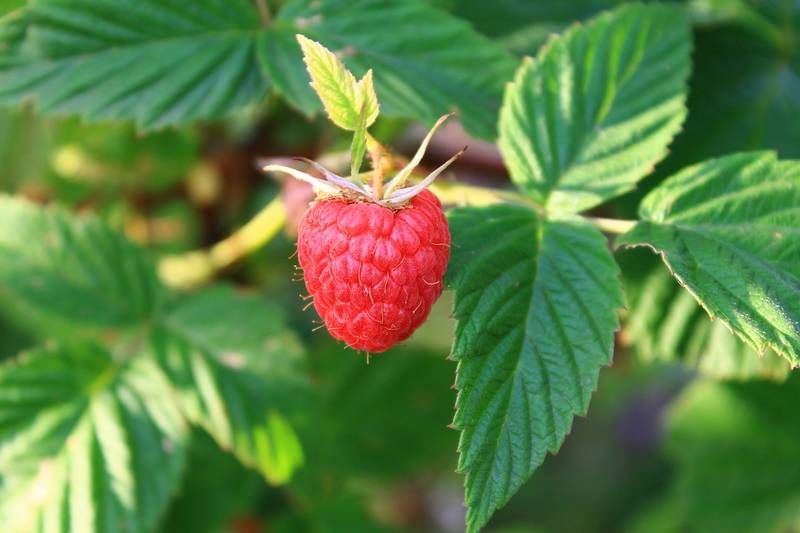
Propagating raspberries: collecting and replanting suckers
This is the easiest and most effective method of raspberry propagation that we recommend. It involves collecting the year's new shoots. Raspberry bushes naturally propagate and reproduce through their rootstocks: underground roots that produce and nourish new shoots called suckers. Collecting these young shoots is very easy and their establishment is almost guaranteed.
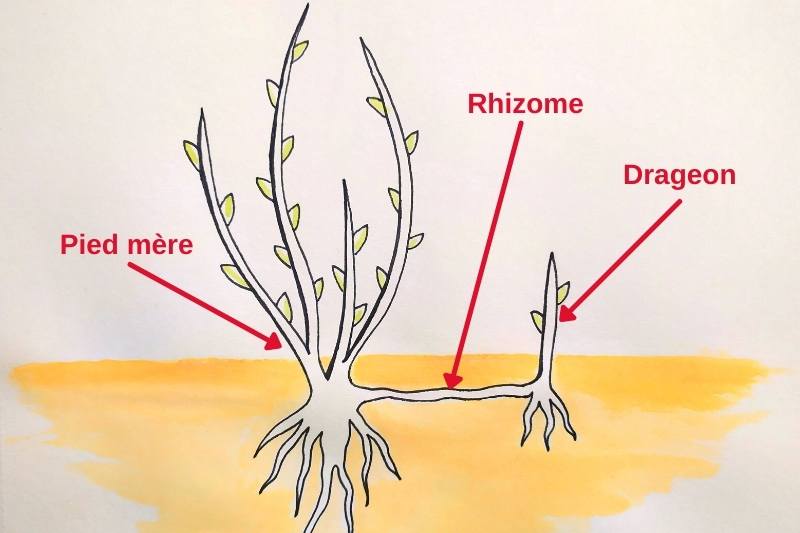
When to divide raspberries?
New raspberry shoots appear in early March. Observe your short grass meadow carefully before the first mowing: you may spot them sometimes far from the mother plant! Young suckers can be collected in March and April, then in autumn during October and November.
How to divide raspberries?
- Dig a hole 30 cm wide and 30 cm deep where you wish to plant your raspberry. Or prepare a bucket with potting soil if you prefer to replant it later.
- Choose a young plant measuring between 15 and 20 cm
- Using a spade, small shovel or organic fork with 3 or 4 prongs: dig around your young raspberry to obtain a root ball 10 cm to 20 cm in diameter. With the organic fork, you'll need to cut the rootstock, the root connecting the young raspberry to the mother plant, using secateurs.
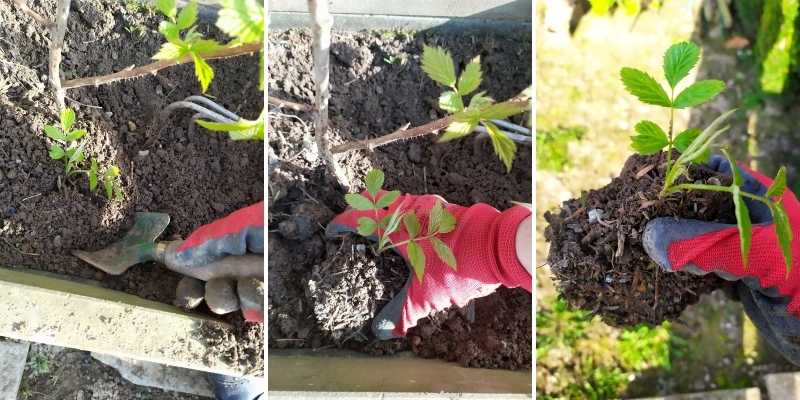
Identify a sucker near the mother plant and collect it with its soil ball.
- Immediately place the young raspberry in the hole or in a bucket
- Backfill with soil, lightly firming
- Water generously
- Mulch the base to retain soil moisture
- Note: The leaves of your raspberry may droop and appear limp just after planting: don't worry! The rootstock connecting the young plant to the mother plant has been severed. The young raspberry must now fend for itself to obtain nutrients. It will take some time to recover. Monitor moisture at its base and don't hesitate to water.
- The young plant will produce delicious raspberries the following spring.
Propagating raspberries: taking raspberry cuttings
This second method involves taking cuttings from a raspberry branch. Note that this method is more complex, requiring more time and effort. The success rate for raspberry cuttings is also lower than the sucker collection method.
When to take raspberry cuttings?
The best time to take raspberry cuttings is in June. Indeed, summer warmth will help the young shoot develop its roots.
How to take raspberry cuttings?
- Using secateurs, cut a healthy green branch from your raspberry
- Cut just below an eye. The eye is the point on the branch where a leaf grows
- Count 3 eyes and cut above the 3rd eye
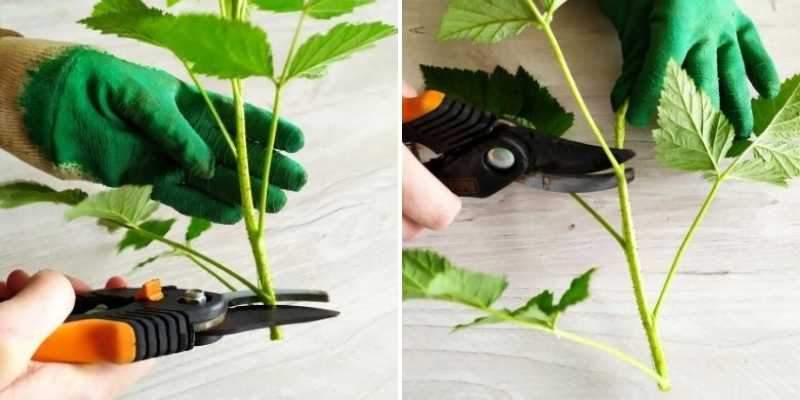
Cut just below an eye, then count 3 eyes and cut just above the 3rd.
- Remove all leaves
- Prepare several cuttings this way
- Prepare buckets with light potting soil.
- Water your potting soil to moisten it.
- Make a small hole 3 to 5 cm deep with your finger or a small stick.
- If desired, you can dip the base of your stem in plant hormone for cuttings before planting, using a root activator or willow water.
- Plant your stem in its bucket, leaving the top 2 eyes exposed
- Firm the potting soil well
- Place a transparent cover over the stem to saturate its atmosphere with water, for example: a growing cloche, the top of a plastic bottle or under a mini greenhouse. Be careful, the stem must not touch the cloche! Nor should any emerging leaves, as this could cause them to rot.
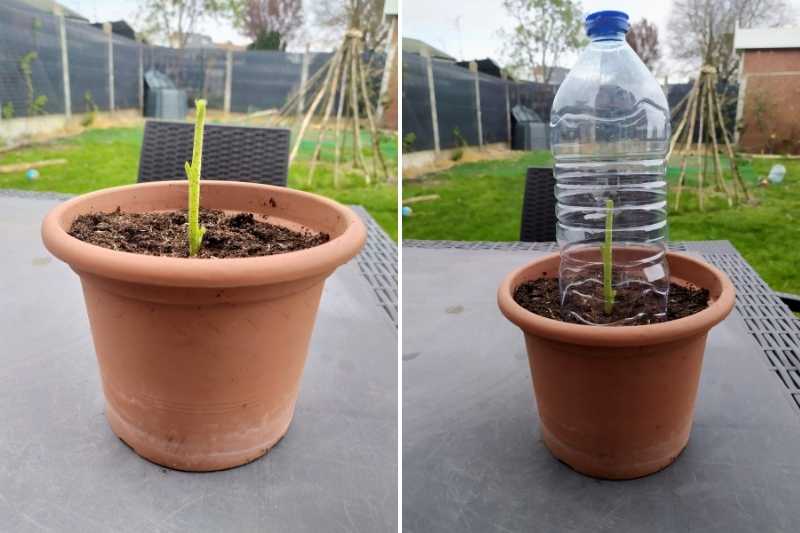
Remove all leaves, plant your stem in moist potting soil and place a cloche.
- Place your bucket in a bright location, ideally in partial shade. Raspberry cuttings need humidity and warmth, but no direct sunlight.
- Monitor watering to keep your potting soil moist and it's advisable to ventilate every 3-4 days.
- After 1 month leaves will begin to appear
- After 2 to 3 months roots will have formed and you can then repot.
- The young plant will produce delicious raspberries after one or two years.
Propagating raspberries: sowing raspberry seeds
When to sow raspberry seeds?
Sowing raspberry seeds is done in spring when temperatures become milder, between April and June depending on your climate.
How to sow raspberries?
- Prepare buckets with sowing potting soil up to 2 cm from the top, lightly firming
- Water your potting soil
- Sow 3 to 4 seeds per bucket and cover with 1 cm of potting soil
- Place the buckets in a cold frame or bright location between 15°C and 20°C
- Keep your potting soil moist without excess water
- Raspberries will appear after a few weeks.
- The young plant will produce delicious raspberries after one or two years.
To go further:
- Discover our different raspberry varieties
- How to choose raspberries
- Our advice sheet: raspberries: planting, pruning and care
- Pruning raspberries: when and how
- See our advice sheet: how to grow raspberries in a bucket
- Discover how to dry your raspberry leaves
































Comments